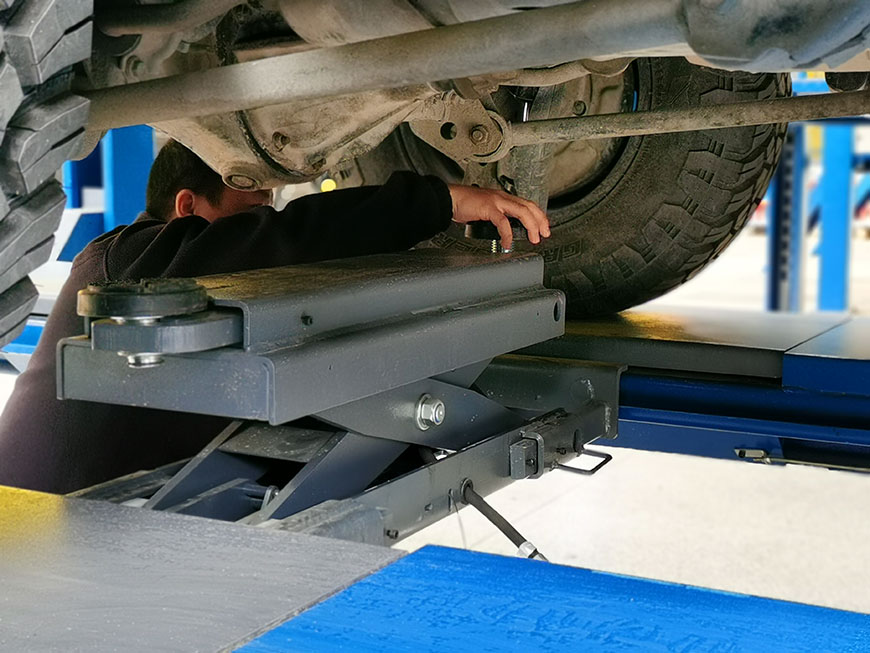In the world of automobiles, precise and smooth handling is vital for both safety and performance. Four-wheel alignment is a crucial maintenance procedure that ensures your vehicle’s wheels are properly aligned to the manufacturer’s specifications. Despite its significance, many car owners overlook this essential aspect of maintenance. In this article, we will explore the concept of four-wheel alignment, why it is essential, how it works, and the numerous benefits it offers.
What is Four-Wheel Alignment?
Four-wheel alignment, also known as wheel alignment or tire alignment, refers to the process of adjusting the angles of all four wheels of a vehicle so that they are parallel to each other and perpendicular to the ground. The primary objective is to ensure that the wheels have optimal contact with the road, providing the vehicle with stability, improved handling, and better fuel efficiency.
The key angles adjusted during a four-wheel alignment include:
- Camber: This refers to the inward or outward tilt of the wheel when viewed from the front of the vehicle. The camber angle affects tire wear and cornering stability. Too much positive or negative camber can lead to uneven tire wear and compromised handling.
- Toe: Toe alignment measures the extent to which the front of the tires points towards or away from each other. Incorrect toe alignment can lead to excessive tire wear and steering problems.
- Caster: Caster alignment pertains to the angle of the steering axis when viewed from the side of the vehicle. Proper caster alignment enhances stability and steering control.
Why is Four-Wheel Alignment Essential?
- Safety: Safety is paramount when it comes to driving, and proper wheel alignment plays a crucial role in ensuring that your vehicle responds predictably to your inputs. A misaligned vehicle may pull to one side, making it difficult to control, especially in emergency situations.
- Tire Longevity: Correct wheel alignment helps distribute the vehicle’s weight evenly across all four tires, reducing uneven tire wear. This prolongs the life of your tires and saves you money on premature replacements.
- Fuel Efficiency: When your wheels are misaligned, the tires face increased resistance on the road, leading to decreased fuel efficiency. Proper alignment reduces rolling resistance, helping you get better mileage out of each tank of gas.
- Handling and Performance: A properly aligned vehicle offers improved handling, ensuring that it responds precisely to your steering inputs. Whether you’re navigating through tight corners or driving on straight highways, proper alignment enhances overall performance.
- Suspension Health: Misalignment puts undue stress on various suspension components, leading to premature wear and potential damage. Regular wheel alignment helps maintain the health and longevity of your vehicle’s suspension system.
How Does Four-Wheel Alignment Work?
A four-wheel alignment is a precise process that requires specialized equipment and expertise. Automotive technicians use advanced alignment machines to measure the angles of each wheel and make necessary adjustments. The process typically involves the following steps:
- Inspection: The technician begins by inspecting the vehicle’s tires, suspension components, and steering system for any signs of wear, damage, or loose parts that could affect the alignment.
- Mounting Targets: The vehicle is positioned on an alignment rack, and targets are mounted on each wheel. These targets are equipped with sensors that communicate with the alignment machine to measure the wheel angles accurately.
- Initial Measurements: The technician takes initial measurements of the camber, toe, and caster angles for all four wheels.
- Adjustment: Based on the initial measurements and the manufacturer’s specifications, the technician makes precise adjustments to the suspension components using specialized tools.
- Final Measurements: After the adjustments are made, the technician takes final measurements to ensure that the wheel angles now align correctly with the recommended specifications.
- Test Drive: A test drive is usually conducted to evaluate the vehicle’s handling and to verify that the alignment is now within optimal parameters.
The Benefits of Proper Four-Wheel Alignment
- Improved Handling and Performance: Proper alignment ensures that your vehicle tracks straight and responds predictably to your steering inputs, enhancing overall driving experience and safety.
- Better Fuel Efficiency: Reduced rolling resistance due to proper alignment leads to improved fuel efficiency, saving you money at the gas pump.
- Prolonged Tire Life: Even tire wear from correct alignment extends the lifespan of your tires, reducing the need for frequent replacements.
- Enhanced Safety: A well-aligned vehicle offers better stability and control, reducing the risk of accidents and promoting safer driving.
- Reduced Maintenance Costs: By preventing premature wear on suspension components and tires, proper alignment helps you avoid costly repairs in the long run.
- The camera bar tracks four targets automatically, more convenient and widespread measurement in a shorter time.
PL-3D-5555PU Wheel Alignment Machine in the factory with valid calibration and it is not necessary to perform calibration at the customer site, Roll the vehicle to complete the compensation, quickly get the measurement data in two minutes, Auto compensation with special clamps, and no need to roll the vehicle, Functions of the Track Width, wheelbase, Tire Diameter, Caster Trail, etc. Free from the influence of ambient light & temperature, stable & reliable.

Four-wheel alignment is a fundamental aspect of vehicle maintenance that should not be overlooked. It is a relatively simple and cost-effective procedure that yields numerous benefits, including improved handling, enhanced safety, better fuel efficiency, and prolonged tire life. By scheduling regular wheel alignments and being proactive about maintenance, you can ensure that your vehicle remains in optimal condition, providing a smooth and safe driving experience for years to come. Remember, alignment is not just about saving money on tires and repairs; it is about investing in your safety and the performance of your vehicle. So, the next time you get behind the wheel, make sure your wheels are aligned and ready to take you on a smooth ride!

